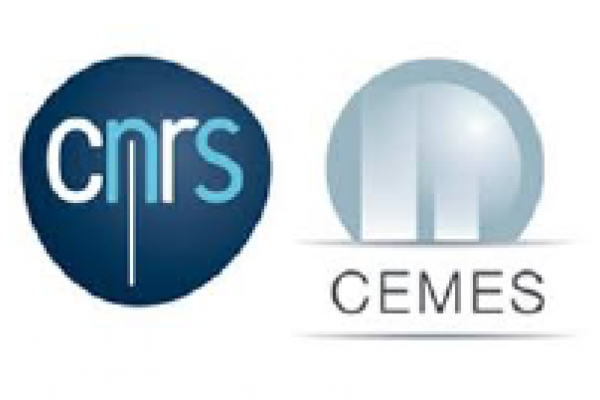PhD position at CNRS-CEMES: Immersive interaction and machine learning methods to optimize and control 3D trajectories simulation

The CNRS-CEMES (Toulouse, France) offers a PhD opportunity in the field of Immersive interaction and machine learning methods to optimize and control 3D trajectories simulation.
Deadline for applications: April 23rd, 2021.
RESUME
Research teams
ENAC Interactive Computing Team / Team I3EM of CEMES-CNRS
Thesis direction
Martin Hytch (CEMES) and Sylvain Pauchet (ENAC)
Duration
Fully Funded 3-year (36 months), October 2021 - September 2024
Doctoral School
EDSYS
Keywords
Augmented Reality, Virtual Reality, Machine Learning, trajectory simulation, immersive interactions, spatialized interactions, visualizations of temporal and spatial data, immersive analytics
CONTEXT AND OBJECTIVES
This thesis is at the crossroads of research in Human-Computer Interaction (visualization, manipulation, and optimization of complex 3D trajectories) and microscopy instrumentation for nanosciences. The thesis objective is to study the use of immersive visualization and Machine Learning methods to optimize, control and analyze 3D trajectory simulations. To carry out this research we will rely on the context of electron microscopy as a field of study and more specifically on an initial work (Kubo et al), carried out at CEMES, of electron trajectories simulation in a Transmission Electron Microscope (TEM). The thesis will initially focus on defining solutions for automatic characterization of the microscope column elements behavior to optimize the existing trajectory simulation model (characterization of the microscope elements behaviors according to the shape of the beam using a neural network). In a second step, it will focus on the visualization and manipulation of these 3D trajectories in an immersive environment with high usability (Besançon et al.). The PhD student will have to propose new ways of trajectories representation and interaction to promote the adoption of modern immersive analytics techniques (Cordeil et al, 2019) in the existing workflows of microscopists.
SCIENTIFIC IMPACTS
HCI: Production of an immersive interactive 3D trajectory optimization and control system that can be used as a demonstrator. Contribute to the production of knowledge in the fields of "Immersive Interactions", "AR and VR", "Immersive Analytics", "visual programming".
Physics: The new direct electron detectors are revolutionizing electron microscopy methods by the quality and quantity of data (up to 1500 images per second). This thesis is part of this dynamic of improving the acquisition, exploitation, and rapid interpretation of data. In pedagogical terms, we want to develop a new approach to training in electron microscopy that could be generalized, and a new interaction between these complex machines and an external audience.
OUTLINE
- Introduction to microscopy, study of the microscopists’ activity and introduction to existing software. Review of the literature and familiarization with the state of the art (immersive interactions, Immersive Analytics, visualizations of temporal and spatial data, Machine Learning...).
- Design and development of immersive visualizations and interactions of electron trajectories. Running a first user study / experimental campaign.
- Analyzing the results and implementing modifications for a second run. Participation to the conferences. Thesis writing and defense.
PHD CANDIDATE’S PROFILE
- Master research or engineering degree in human-computer interaction, computer science, physics, materials science, or mathematics;
- Strong interest in human-computer interaction and Machine Learning methods;
- Interest in virtual reality and augmented reality;
- Strong programming skills (Unity, C#, Python);
- Basic knowledge in the use of 3D software;
- Autonomous, motivated, and rigorous.
APPLICATION PROCEDURE
- Formal applications should be sent to Sylvain Pauchet and Martin Hytch.
- They should include a detailed CV, a motivation letter, transcripts of degrees. Samples of published research by the candidate will be a plus.
REFERENCES
- Besançon L., Ynnerman A., Keefe D. F., Yu L., et Isenberg T. The State of the Art of Spatial Interfaces for 3D Visualization. Computer Graphics Forum, p. cgf.14189, 2021.
- Cordeil M, Cunningham A, Bach B, Hurter C, Thomas B, Marriott K and Dwyer T. 2019. IATK: An Immersive Analytics Toolkit. 2019 IEEE Conference on Virtual Reality and 3D User Interfaces (VR).
- Kubo Y, Gatel C., Snoeck E., and Houdellier F. Optimising electron microscopy experiment through electron optics simulation. Ultramicroscopy, 2017, pp.67-80.
- Dupuy, Julien. Contrôle dynamique et optimisation des observations en microscopie électronique en transmission. PhD Thesis, Université de Toulouse, 2021.
